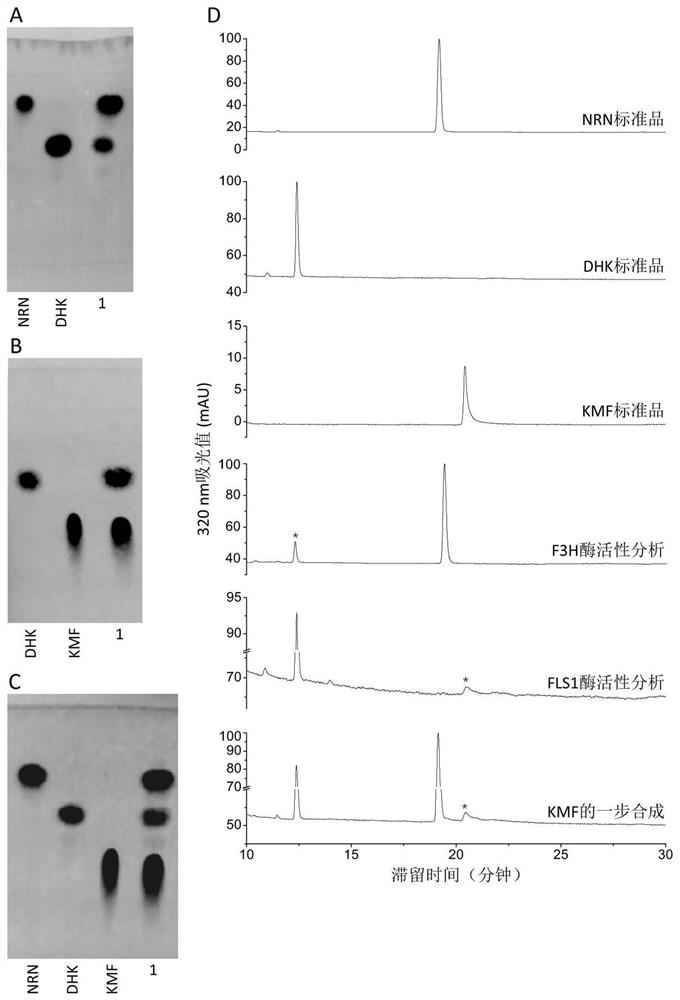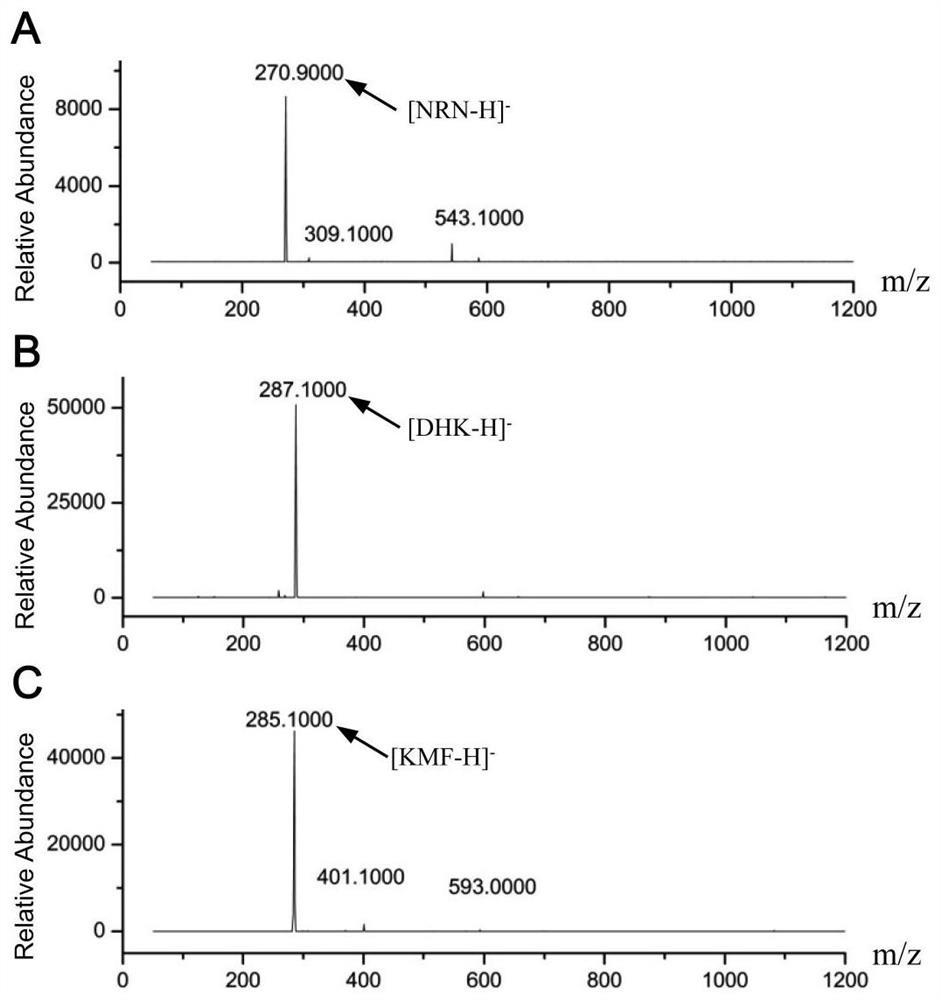A method for enzymatically synthesizing kaempferol
A technology of enzymatic synthesis and kaempferol, applied in chemical instruments and methods, biochemical equipment and methods, enzymes, etc., can solve problems such as lack of rational regulation of cooperative expression, large metabolic burden of host bacteria, and inhibition of host bacterial growth. , to achieve the effect of low cost, short cycle and easy operation
- Summary
- Abstract
- Description
- Claims
- Application Information
AI Technical Summary
Problems solved by technology
Method used
Image
Examples
Embodiment
[0047] 1. Cloning, induced expression and purification of key enzyme genes in the biosynthetic pathway of kaempferol
[0048]1.1 Cloning of flavanone-3-hydroxylase (F3H) gene f3h: design PCR amplification primers, the forward primer is The base in italics indicates the enzyme cutting site BamHI, and the reverse primer is Bases in italics indicate the enzyme cutting site EcoRI. The f3h gene (gene accession number: NM_001203121.1) was cloned from Arabidopsis thaliana into the prokaryotic expression vector pET-32a, and the recombinant plasmid pET-32a-f3h was constructed.
[0049] 1.2 Cloning of flavanone synthase (FLS) gene fls1: design PCR amplification primers, the forward primer is The base in italics indicates the enzyme cutting site BamHI, and the reverse primer is Bases in italics indicate the enzyme cutting site EcoRI. The fls1 gene (gene accession number: NM_120951.3) was cloned from Arabidopsis thaliana into the prokaryotic expression vector pET-32a, and the ...
PUM
| Property | Measurement | Unit |
|---|---|---|
| purity | aaaaa | aaaaa |
Abstract
Description
Claims
Application Information
 Login to View More
Login to View More - R&D
- Intellectual Property
- Life Sciences
- Materials
- Tech Scout
- Unparalleled Data Quality
- Higher Quality Content
- 60% Fewer Hallucinations
Browse by: Latest US Patents, China's latest patents, Technical Efficacy Thesaurus, Application Domain, Technology Topic, Popular Technical Reports.
© 2025 PatSnap. All rights reserved.Legal|Privacy policy|Modern Slavery Act Transparency Statement|Sitemap|About US| Contact US: help@patsnap.com



